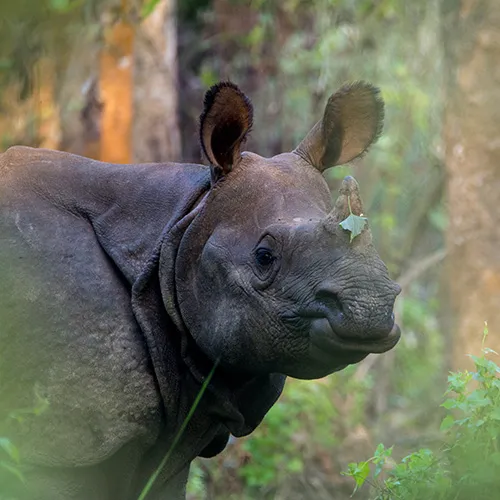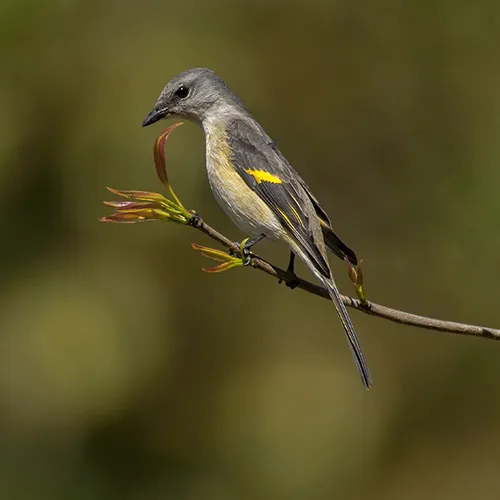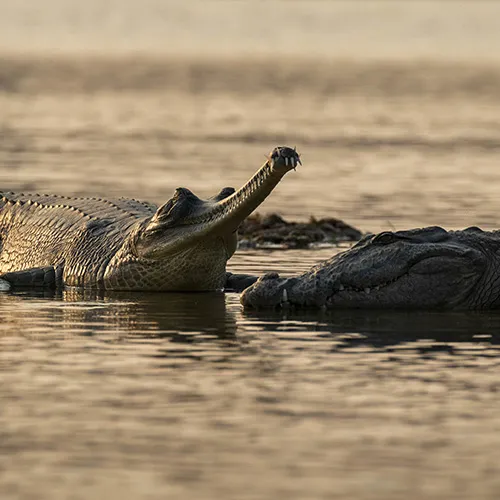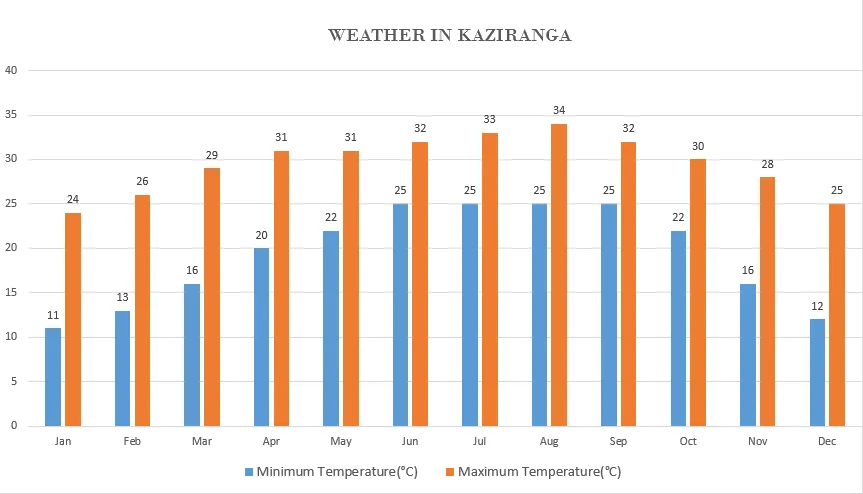Kaziranga National Park
Madhya Pradesh, India
About Kaziranga National Park
Kaziranga National Park, a gem in Assam’s wilderness, beckons nature enthusiasts to embark on a unique tiger safari adventure. Spanning 430 square kilometers across Golaghat and Nagaon Districts, this park is a testament to India’s commitment to wildlife preservation. The park, cradled between the Brahmaputra River and the Karbi Anglong hills, offers a mesmerizing landscape.
Designated a national park in 1974 and a UNESCO World Heritage Site, Kaziranga captivates with its diverse terrain—dense forests, towering elephant grass, and wetland marshes. As you traverse the park along National Highway 37, winding through tea estates, the air is filled with the allure of untamed nature.
While Kaziranga is renowned for its one-horned rhinoceros population, it is also a haven for tiger safaris, inviting adventure seekers to witness the majestic big cats in their natural habitat. This wildlife sanctuary remains untouched by human interference, making it a prime destination for those seeking the perfect blend of nature and culture.
For a holistic experience, consider extending your journey to Agra, home to the iconic Taj Mahal. Explore the majestic tiger and leopard habitats, encounter elusive sloth bears, and immerse yourself in the cultural tapestry of India. Kaziranga National Park, with its rich biodiversity, stands as a symbol of Assam’s natural wonders, offering a harmonious blend of tiger safaris, bird watching, and cultural exploration.
Highlights
- UNESCO World Heritage Site.
- Home to one-horned rhinoceros
- Lush forests, elephant grass, and wetlands.
- Abundant wildlife, including tigers and elephants
- Pristine natural beauty in Assam
- Protected since 1974
- Diverse bird species
- Unique Karbi Anglong hill and Brahmaputra river setting.
Facts about Kaziranga National Park
Area: 430 sq. km
Coordinates: Latitude: 26.5775° N, Longitude: 93.1711° E
Key Species of Kaziranga National Park

Mammals
- Indian Rhinoceros
- Asiatic Elephant
- Royal Bengal Tiger
- Wild Asian Water Buffalo
- Leopard
- Barasingha
- Wild Pig
- Pangolin
- Sambar Deer
- Assam Macaque

Birds
- Greater Adjutant
- Greater Hornbill
- Swamp Francolin
- Bengal Florican
- Weathered Hornbill
- Imperial Eagle
- Jerdon’s Baza
- Slender Billed Vulture
- Pied Falconet
- Pallas’s Fish Eagle

Reptiles
- Gharial
- Bengal Monitor Lizard
- India Water Monitor
- Oriental Garden Lizard
- Assam Roofed Turtle
- King Cobra
- Indian Rock Python
- Indian Flapshell Turtle
- Assam Garden Lizard
- Checkered Keelback
Safari Zones of Kaziranga National Park
This National Park is divided into 4 Ranges:
1. Burapahar : Ghorakati
2. Western Range : Bagori
3. Central Range : Kohora
4. Eastern Range : Agoratli
The western and central zones of Kaziranga are the two ranges from where one can explore the jungle via an Elephant safari as well as a jeep safari. The eastern zone on the other hand not only provides jeep safaris to its tourists but also functional boat safaris. With respect to the fourth and last zone, Burapahar, it is a hilly terrain which is also considered best for birding. In addition to the beautiful terrain, it also serves as one of the best routes to explore the jungle on foot. Trekking is a common activity that a lot of nature lovers take up when in Kaziranga.
Note: The elephant safari is organized for an hour.
Reaching Kaziranga National Park
Flight
The closest Airport to Kaziranga is Jorhat, at a distance of 105 kms. It is well connected with the city of Kolkata and Kolkata in turn is connected very well with major cities in India like New Delhi, Mumbai, Hyderabad, Chennai and Bengaluru. Kaziranga National Park is also well connected to Guwahati. Guwahati is again accessible easily via New Delhi, Mumbai, Jaipur, Chennai and Bangalore.
Road
Most of the journey to Kaziranga is made via Guwahati, hence applying that Guwahati is just 250 kms away, a 05-hour drive from the park.
Weather and Clothing
- DO NOT carry shiny/bright colored clothing. Instead, carry earthy colors like shades of dull green or olive green, beige, and grey. Black is also avoidable as it attracts mosquitos.
- Carry comfortable, breathable clothes (cotton) in summer.
- Carry layers (4-5) of thin woolen clothes rather than one heavy jacket for winter. Layers are a lot more helpful through the varying temperatures during the day.
- Carry a wind cheater/rain coat just in case there is a light shower.
- Carry a Cap/Hat during summer.
- Avoid wearing strong perfume while on safari. Animals have a strong sense of smell and it may distract them.

Enquire Now
Please fill the form below and our team will get back to you within 24 hours with a perfect tiger safari tour package.
FAQ
Kaziranga National Park is a renowned national park in India, located in the state of Assam. It is celebrated for its unique ecosystem and is home to the one-horned rhinoceros.
Kaziranga National Park was designated as a UNESCO World Heritage Site in 1985 for its exceptional biodiversity and successful conservation efforts.
Yes, Kaziranga offers tiger safaris, providing opportunities to witness the park’s majestic tigers in their natural habitat.
The best time to visit is from November to April when the weather is pleasant and wildlife is more visible.
Kaziranga’s conservation initiatives have played a crucial role in increasing the population of one-horned rhinoceroses.
Besides rhinoceroses and tigers, visitors can see elephants, wild water buffalo, leopards, and various bird species.
Numerous lodges, resorts, and government-run accommodations are available in close proximity to the park, providing visitors with comfortable stay options.
The park’s eco-tourism initiatives aim to benefit local communities and promote sustainable tourism while conserving the environment.
Challenges include human-wildlife conflicts, habitat loss, and the impacts of climate change on the park’s ecology.
Tourists can support the park by adhering to eco-friendly practices, respecting wildlife, and contributing to conservation efforts through responsible tourism.



